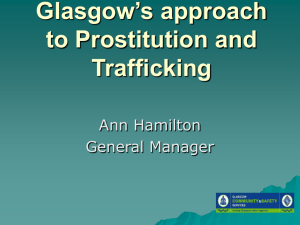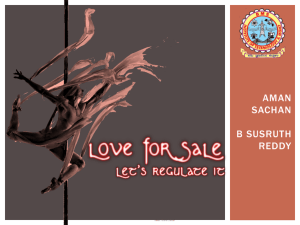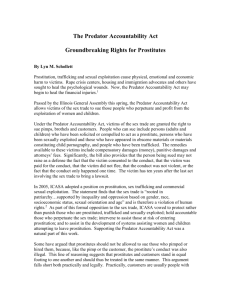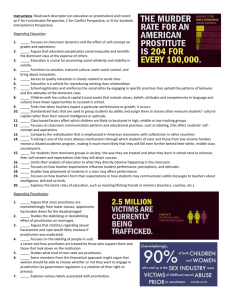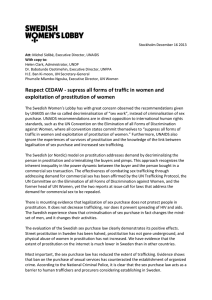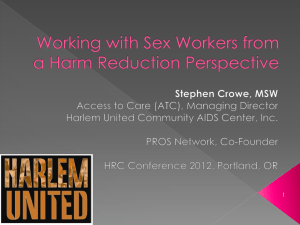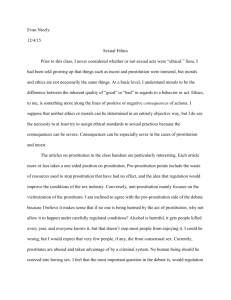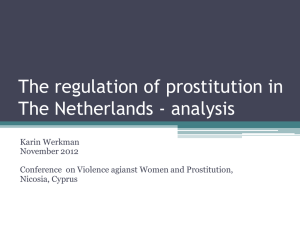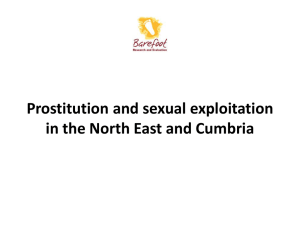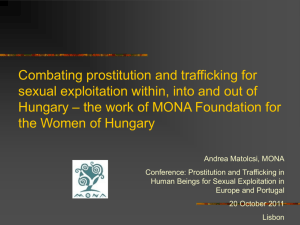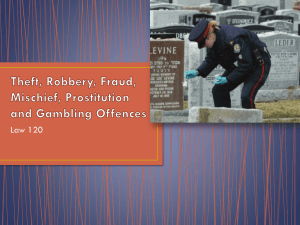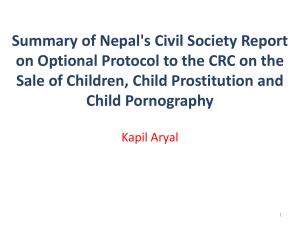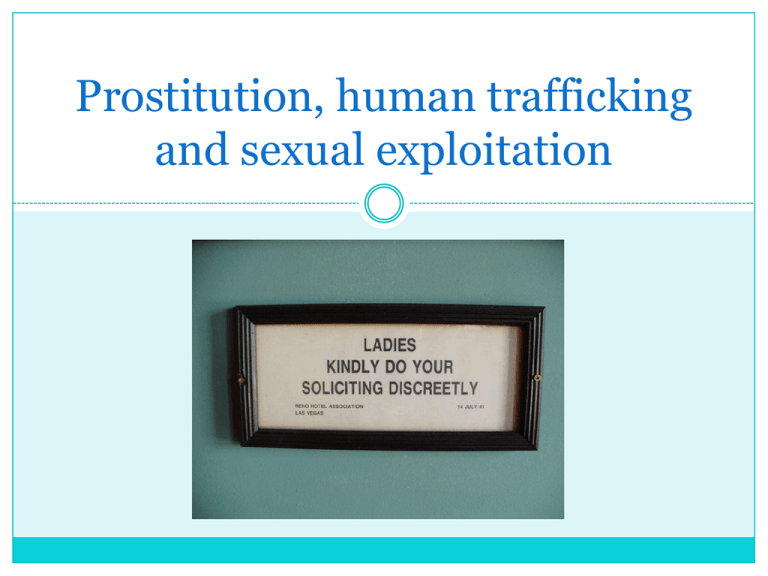
Prostitution, human trafficking
and sexual exploitation
Prostitution
Prostitution is sexual activity in exchange for
payment
Street prostitution
Escort services
Sex tourism
“Trips organized from within the tourism sector, or from
outside this sector but using its structures and networks, with
the primary purpose of effecting a commercial sexual
relationship by the tourist with residents at the destination”
Legal approaches
Abolition
Regulation
Legalisation
Decriminalisation
Feminism
Prostitution in the Netherlands
Prostitution is defined as a legal profession
Brothels are legal businesses
Approximately 25 000 prostitutes
70 % of prostitutes are foreigners
One of the biggest destinations for victims of human
trafficking
http://www.mensenhandel.nl/campagne/m_flash.h
tml
Prostitution in Sweden
Regarded as violence against women
Illegal to buy sex since 1999 – the customer is seen
as exploiting the prostitute
Reasons for the law
Reduce prostitution
A political message
To decrease human trafficking
Experiences in Sweden
Street prostitution decreased by 40 % from 1999 to
2003
Same period 200 buyers got a fine
Small percentage of the total number of clients
Number of victims of human trafficking was
increased from 200-500 to 400-600 in 2003
No official evaluation made
Negative consequences of prostitution
Violence against women
STDs
Exploitation of women
Encourages human trafficking
Human trafficking
The trafficking of human beings is the recruitment,
transportation, harbouring, or receipt of people for
the purpose of exploitation.
Estimated 600-800 000 men, women and children
are trafficked across boarders each year
80 % of them are women and girls
Majority trafficked into commercial sexual
exploitation
Trafficking is a lucrative industry
The victims
Usually the most poor and vulnerable people in a
region
Promised a good job in another country – better life
The woman is forced into prostitution
Estimated that 2/3 of the victims come from Eastern
Europe
¾ have never worked as prostitutes before
Other countries are Phillipines, Thailand, Brazil ...
Causes of human trafficking
Unemployment
Poverty
Organised crime
Profitability
Insufficient penalties for traffickers
UN: ”Governments and human rights organizations alike
have simply judged the woman guilty of prostitution and
minimized the trafficker's role."
Demand for prostitutes
How to reduce human trafficking?
Government actions
Making human trafficking illegal
Raise awareness
Potential victims
Police, social welfare workers
Clients of prostitution
Possible questions for debate
Should prostitution be legal or illegal?
Should buying sex be legal or illegal?
What other measures can be used to limit
prostitution?
How to solve the negative consequences of
prostitution?
How to avoid and stop human trafficking?

